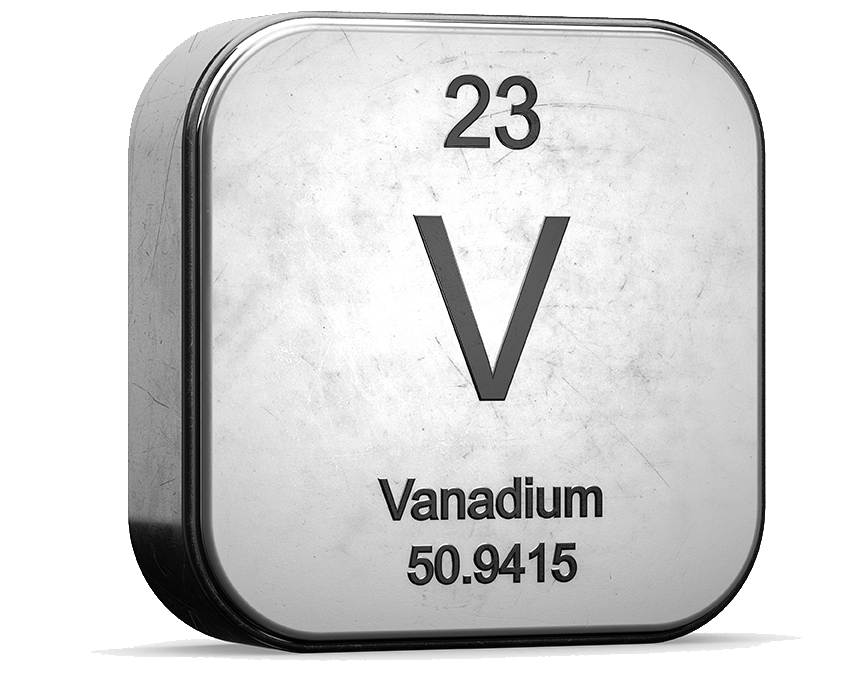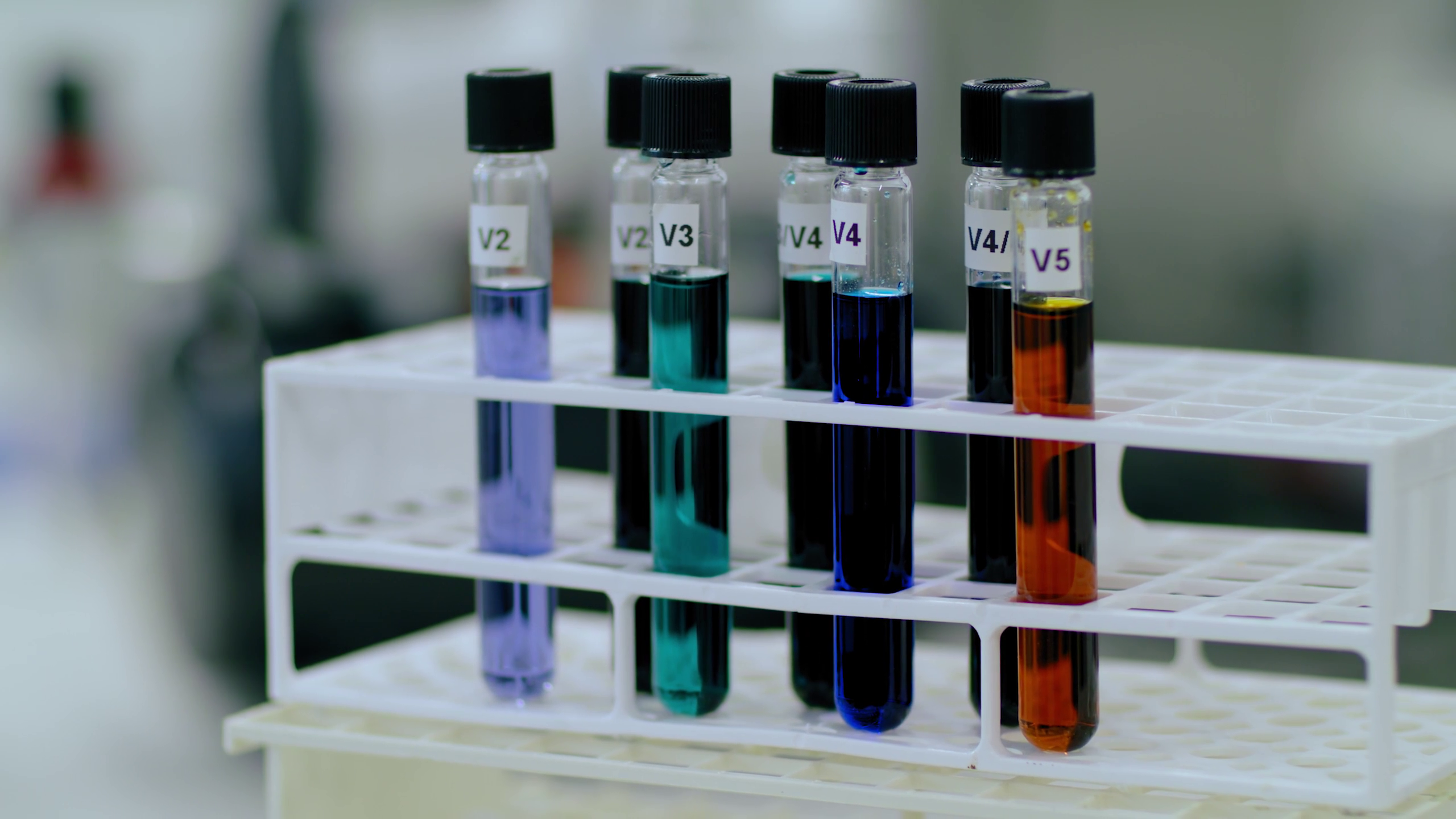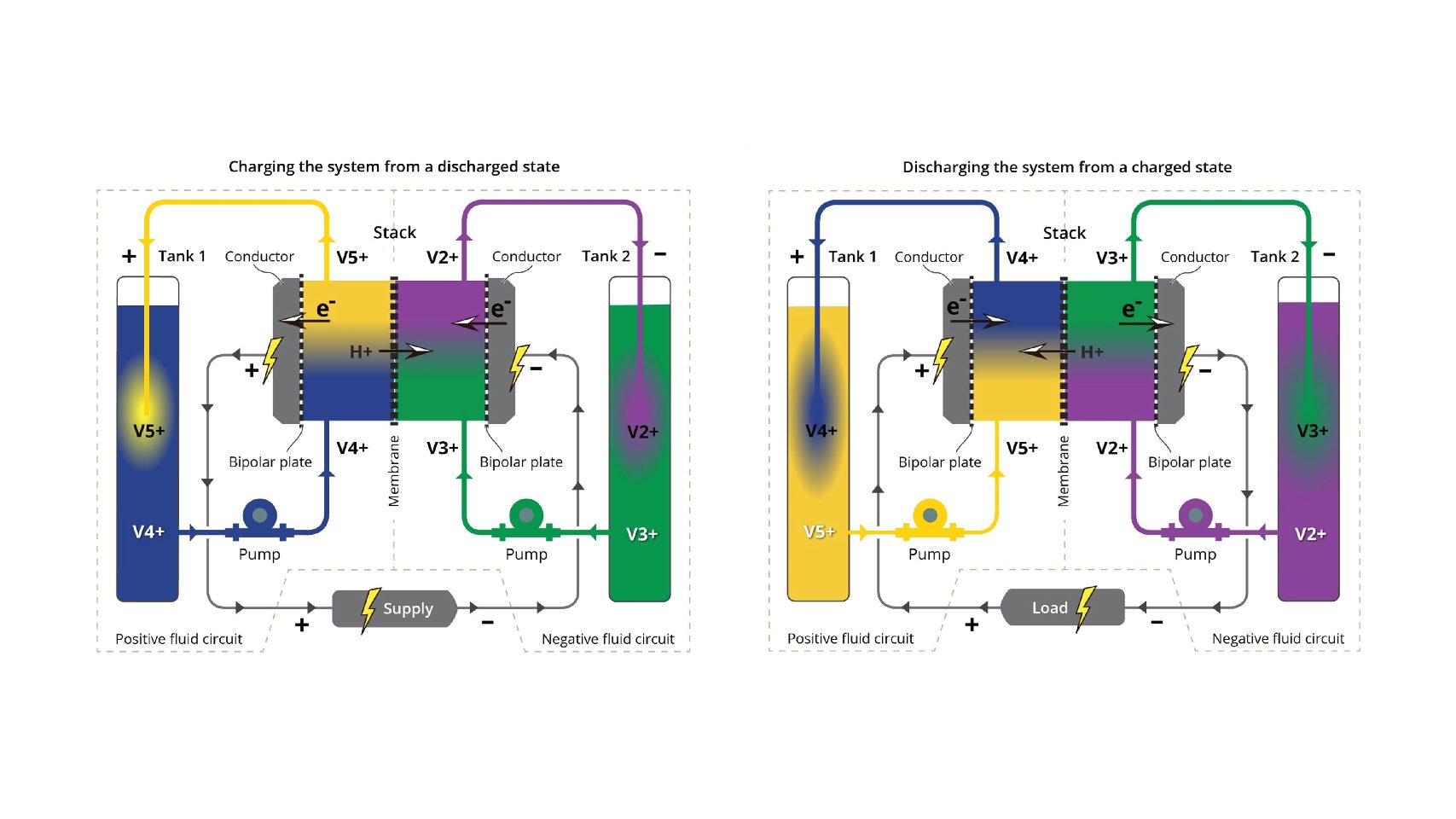In our latest blog, we outline why one of Earth’s most common, yet relatively unknown, metals is becoming increasingly important for the world’s future energy system.
Tuesday 9 January 2024
“What on earth is vanadium?” It’s one of the questions we get asked most often at Invinity, and it’s hardly surprising. Unlike gold, silver or aluminium, it’s not an easily relatable metal to most people, being neither precious (currency/jewellery), or instantly recognisable (foil for culinary use). However, to those who work in the steel industry, and increasingly those in the energy industry, vanadium is highly significant. So what exactly is vanadium, and why is it becoming so important for the future?
From Nordic Gods to Steel and….Batteries?
Although its name conjures up visions of the exotic (it was named after the Nordic goddess of love, Vanadis, or Freya/Frigg from which we also get the day of the week “Friday”), the reality is a little more mundane. Vanadium (atomic number 23) is actually a grey, highly abundant element that is found in over 60 different minerals on every continent in the world, with some of the most established primary sources found in South Africa, China and Brazil and additional production rapidly coming online in the USA, Canada and Australia.

For many years, its primary application has been to strengthen steel, particularly for car chassis and for high rise buildings and bridges around the world. It is also used in hundreds of other steel applications such as heavy industrial equipment, tools (the word vanadium is often printed on the side of spanners to indicate they have been strengthened – see above), medical devices, railway tracks, turbine engines and many more. Looking at it chemically, it is one of the transition metals, meaning vanadium is a good conductor of electricity (helpful) and is far less reactive (more durable) than alkali metals such as sodium and lithium.
Now that we’ve covered some of the history and basic properties of this intriguing, yet common, element, we can look at its most interesting and important property, and understand why vanadium is so important for the world of batteries and energy storage.
Why is vanadium suitable for energy storage batteries?
We all know that the purpose of a battery is to store (charge) and release (discharge) electricity on demand. How does it do it? Through an electrochemical reaction, in which an electron passes back and forth from one side of the battery (the negative anode) to the other (the positive cathode). Vanadium is well-suited to this because, when dissolved in a simple electrolyte (a mild sulphuric acid diluted with water), it exists in four stable ionic states (the vanadium atoms can hold different numbers of electrons) being V2, V3 (the anode or anolyte) and V4, V5, (the cathode or catholyte).

As you charge/discharge the battery, these electrons will move freely from the anolyte to the catholyte in a completely reversible and repeatable reaction. This means the battery does not suffer from degradation (loss of capacity) and can therefore be cycled (fully charged and discharged) almost indefinitely making it capable of a very high level of throughput (the total amount of energy that can be cycled through the battery).

Above: diagrams of the fully repeatable charging and discharging process of a vanadium flow battery
Since the same electrolyte is used on both sides of the battery, there is a level of simplicity to the design and operation. By comparison, other batteries, specifically lithium-ion, but also other types of flow battery, utilise different elements for the positive and negative sides of the battery (including so-called “conflict elements” such as cobalt and nickel). Taking advantage of vanadium’s ability to exist in a solution in four different states and using this property to make a battery that needs just one element for both the positive and negative electrolyte solutions, means vanadium flow batteries demonstrate superior durability and have far longer working lives than other types of battery.
So what other benefits does it bring?
It is widely accepted that the transition from fossil-fuels to renewable energy requires energy storage. But we also need to take in to account some other key characteristics that vanadium can provide not only for the energy transition, but also towards supporting the concept of a circular economy.

Above: the circular economy. Source – Deloitte LLP
Principally, battery recyclability. Recent tests have proven that it is possible to recover 97% of the vanadium used in the electrolyte itself. Given that the other materials used to make a vanadium flow battery are also fully recyclable, this means there is virtually no waste created at end-of-life and the vanadium can be used either for other purposes or to be made back into electrolyte again. Lithium batteries, however, are much more difficult to recycle and it is worth noting that EVs alone are expected to create 235,000 tonnes of battery material waste by 2040, eight times more than by 2030.
Secondly, in addition to extracting vanadium from the ground through mining, it can also be sourced as a by-product from existing production methods. Currently, much vanadium is recovered as a co-product with iron processed for steel production. It can also be recovered as a secondary product from fly ash, petroleum residues, alumina slag, and from the recycling of spent catalysts used in some crude oil refining. Using vanadium from this secondary production method means we can be more efficient with our use of resources and reduce the amount of “virgin raw materials” in our batteries.
The final major benefit vanadium brings to our batteries is safety. When mixed into an electrolyte, which in our case is around 70% water, a vanadium flow battery has absolutely no fire risk (check out this video demonstration). This makes it ideal for grid scale battery storage installations where safety is paramount (and often required to be demonstrated by planning/permitting authorities). The lack of any fire risk also means that our batteries don’t require large temperature regulation and fire suppression systems, unlike lithium-ion batteries, and they can easily be stacked on top of each other and side by side, maximising the use of space on sites.
Key for the future electric grid
The grid of the future is already coming closer to reality, and with ever more renewable energy generation (wind and solar) already being built at record pace around the world, flexible, durable and safe energy storage will be required to manage this grid on the way to net zero. However, in line with the second principle of the Just Transition Alliance, “there is no contradiction among simultaneously creating sustainable development, having a healthy economy and maintaining a clean and safe environment”. As such, it is the important characteristics of safety, reliability and durability, as well as their circular economy credentials, that make Invinity’s flow batteries best suited to support the world’s energy transition to net zero and it is thanks to this one amazing element that sits at their heart – vanadium.